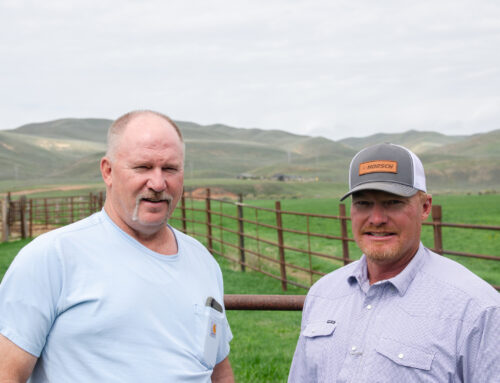Weed In A Can: How Cannabis Drinks Are Changing The Ritual Of Drinking
May 19, 2025
On a shelf between craft beer and kombucha, something else is showing up in more fridges, bar tabs and DoorDash carts: cannabis. Not flower, not gummies: drinks. Fizzy, fruit-forward, sometimes microdosed, sometimes not. Once confined to dispensaries and health stores, THC beverages are moving into everyday life, and fast.
Some brands promise a cleaner, hangover-free buzz. Others position themselves as functional, plant-based upgrades to wine or cocktails. But whatever the pitch, one thing is clear: cannabis drinks are no longer a novelty. They’re scaling, diversifying and, in some states, outselling more traditional cannabis products like edibles.
How Big Is The Cannabis Drinks Industry?
Retail data from Hoodie Analytics, which tracks licensed cannabis dispensaries, shows a beverage market maturing quickly, especially at the high-dose end. From March 2024 through March 2025, ready-to-drink drinks containing 100 milligrams of THC generated $141 million in U.S. dispensary sales, compared to $20.7 million for 10-milligram drinks and $8 million for 25-milligram formats. Top-selling flavors included lemonade, root beer and orange, with brands like Keef, Uncle Arnie’s and Ray’s Lemonade leading in overall velocity. Notably, these figures do not include hemp-derived beverage sales through general retail channels.
The broader global category is growing as well. According to Grandview Research, the THC seltzer market was valued at $344.7 million in 2023 and is projected to surpass $2.6 billion by 2030.
Among emerging U.S. players, Brēz, America’s best-selling cannabis drinks brand, reported $28 million in revenue in 2024 and $13 million in the first quarter of 2025, a number that outpaces many longer-established cannabis beverage brands operating solely within licensed dispensary channels.
Yet despite the growth, the industry remains fragmented. Many beverage sales still happen through state-regulated cannabis shops, while others operate under hemp-derived loopholes created by the 2018 Farm Bill. The result is a market with both enormous upside and ongoing legal uncertainty, where measuring “how big” depends heavily on what kind of THC is being tracked and in what regulatory context.
When Did The Cannabis Beverage Boom Really Start?
The current wave of cannabis beverages began with the passage of the 2018 Farm Bill, which federally legalized hemp and allowed for the sale of products containing less than 0.3% delta-9 THC by dry weight. That legal framework gave rise to a new class of hemp-derived THC drinks that could be sold outside dispensaries, even in states where recreational marijuana remains illegal.
Innovation in the space began earlier in Canada. Beverage companies like Boston Beer entered the market under full federal legalization, launching products such as TeaPot, a line of 5-milligram THC iced teas. “Cannabis drinks were traditionally confined to dispensaries, which can be intimidating and confusing,” says Paul Weaver, head of cannabis at Boston Beer Company, one of the top brewers in the United States. “The recent proliferation of hemp-derived THC beverages in American liquor stores has validated our hypothesis.”
In the U.S., the category’s breakout moment came between 2023 and 2024. As states like Minnesota legalized low-dose THC products for over-the-counter sale, cannabis beverages began appearing in liquor aisles, on retail delivery platforms like DoorDash and through multi-brand DTC sites such as ShopWandererous, launched by Wana Brands to help normalize consumer access.
Where Are Cannabis Drinks Gaining Ground?
Cannabis beverages are finding footing well beyond coastal dispensaries. According to Wana Brands, some of the most enthusiastic adoption is happening in Southern and Midwestern states where adult-use cannabis remains illegal.
“In emerging markets across the South and Midwest—especially those without adult-use programs—we’re seeing consumers turn to hemp-derived beverages as a legal, approachable alternative to alcohol,” says Stephanie Daley, vice president of supply chain and operations at Wana. “Today’s consumers want control, consistency and transparency in what they consume. Beverages deliver on those expectations in a format that feels familiar.”
DoorDash, one of the largest last-mile platforms in the U.S., has seen rising demand for hemp-derived THC products delivered directly to consumers.
“Since 2020, DoorDash has been expanding our offerings beyond restaurant delivery, into categories like grocery, alcohol, retail and more to meet evolving consumer needs and expectations of convenience,” says Tom Carroll, general manager of the hemp category at DoorDash. “With growing demand for hemp-derived THC and CBD products, we saw a natural opportunity to expand access to a wide selection of products consumers enjoy. Since launching, we’ve continued to see strong and sustained consumer interest in the category, and we’re excited to offer eligible customers a seamless, safe way to get products they want, while helping local merchants reach new consumers.”
DoorDash data confirms that interest in hemp-derived THC beverages is growing steadily. According to the company, the category is “highly incremental to existing basket sizes” and sees notable demand spikes around major holidays—up 40% on 4/20 compared to the 2025 baseline, with similar increases around July 4. DoorDash also notes that consumers are embracing these drinks as part of their broader retail experience, not just as a novelty.
Meanwhile, companies like Edibles.com are helping to fill the gap in underserved regions. A new venture from the parent company of Edible Arrangements, Edibles.com is rolling out curated hemp marketplaces in states like Texas, Georgia and Florida, places with high demand and limited access. “We’re building out a platform that’s all about gifting, food, health and wellness,” CEO Somia Farid Silber told Benzinga. “This is the wellness part.”
What Types Of Cannabis Drinks Are People Buying?
Despite the rise of low-dose, lifestyle-oriented drinks, high-potency beverages are still dominating by dollar sales, as evidenced by Hoodie Analytics’ data. These often come in small bottles and, while not designed for sipping, remain popular with heavy consumers.
But a shift is underway. At brands like Triple, the goal is to build a beverage portfolio that fits seamlessly into the way consumers already drink.
“We’re building Triple to be the next great American beverage brand—not a niche cannabis product,” says Lambo Perkins, the emerging company’s chief marketing officer. “In a category where most brands lean toward either wellness minimalism or stoner kitsch, Triple sits confidently in the middle: bold, clean and built for the everyday consumer.”
Triple’s line includes a 3-milligram High Seltzer (designed for sessionability), a 10-milligram High Lemonade and a 5-milligram enhancer called The Drop. “Gen Z is redefining what it means to ‘have a drink,’” Perkins says. “They want the ritual, but not the calories, the bloat or the hangover.”
That shift toward sessionable, lifestyle-oriented drinks began in part with Cann, one of the earliest low-dose THC beverage brands to gain national traction. Backed by celebrity investors and widely credited with introducing the idea of “social tonics,” Cann helped frame cannabis drinks as a mainstream alternative to beer or hard seltzer. Its model—2mg of THC per can—set the tone for a new generation of microdosed products aimed at the wellness-conscious drinker.
At Wana, that trend toward intentionality is also evident. “Consumers aren’t chasing trends—they’re searching for solutions,” says Daley. “That’s why we’re starting to see a shift toward functional blends containing other cannabinoids in addition to THC, such as CBD and CBG.”
Even in curated marketplaces like Edibles.com, which carries fewer than 40 SKUs, drinks remain a consistent part of the offering, often positioned as an approachable entry point for new or wellness-minded consumers. “This is about offering a safer, more straightforward way for people to try or access THC,” said Edibles.com’s Thomas Winstanley in a recent interview. “Especially in places where people aren’t sure what’s legal or safe.”
The category is also drawing attention from celebrity entrepreneurs and wellness innovators. Snoop Dogg, through his venture Iconic Tonics, has backed a portfolio of cannabis beverages aimed at mainstream social settings. Meanwhile, brands like Adaptaphoria are leaning into mood-enhancing, CBD-based formulations built for relaxation, focus and stress relief, signaling that the future of cannabis drinks may be as much about wellness as it is about the high.
Are These Drinks Replacing Alcohol Or Reinventing It?
While some cannabis brands present THC beverages as a direct substitute for alcohol, most industry players frame them as something else entirely: a new kind of social ritual. At Boston Beer Company, the approach is additive rather than competitive.
“Cannabis beverages are a nascent category, making it difficult to directly correlate specific cannibalization of our individual brands,” says Weaver. “However, the macro-impact on the beverage alcohol category can no longer be ignored.”
That shift is already playing out in retail behavior. DoorDash reports that when customers order from alcohol retailers carrying hemp-derived THC products, two-thirds of their basket value comes from hemp, with the remaining third from traditional alcohol. Rather than choosing one or the other, consumers appear to be blending both, mixing microdosed drinks with legacy favorites depending on the occasion.
Triple’s CMO, Lambo Perkins, sees that pattern in cultural terms. “We believe Gen Z is mindful, in control and interested in experiences rather than consequences,” he says. “They still want to sip on something social; they’re just over the hangover, the calories and the bloat.”
That generational attitude is reflected in the way cannabis beverages show up in real life: at tailgates, beach days, dinner parties and post-work wind-downs. “It’s about giving people the same ritual as a beer or cocktail,” says Perkins, “without the baggage.”
For companies like Wana and Brēz, that also means offering predictable onset and duration, clear labeling and consistent effects—features that align with how alcohol has been regulated and marketed for decades. The difference is the underlying active ingredient and the intent.
Can This Market Keep Growing?
By nearly all measures, yes. California alone saw monthly cannabis beverage sales jump from $2.8 million in March 2024 to over $4 million by March 2025, according to Hoodie Analytics. Brands like Ray’s Lemonade and Ayrloom continue to lead in velocity, while smaller players like Sips and Soganja are also gaining ground.
On the national scale, mainstream alcohol retailers like Total Wine & More and ABC Fine Wine & Spirits are expanding their hemp-derived offerings. “We believe there’s growing interest among our alcohol partners in expanding their DoorDash offerings to include hemp-derived THC and CBD,” a company spokesperson confirms.
At the same time, operators are bracing for increased regulatory scrutiny, as Congress debates a new Farm Bill that could redefine the legal boundaries for hemp-derived THC—and as multiple states consider outright bans. Rather than resist the shift, many in the industry are actively pushing for smarter, more consistent oversight.
“We have no interest in a wild west approach,” says Triple COO Will Spartin, who also sits on the board of the Hemp Beverage Alliance. “We are advocating for positive regulation that balances between a free market approach and the need to protect consumer safety.”
That sentiment is echoed by leaders at Edibles.com, who see responsible retail and clear milligram caps as essential for the category’s survival. “Regulation in this category can be a net positive,” Winstanley said. “It helps weed out bad actors. It legitimizes good ones. And it creates a safer space for the consumer.”
Still, the future of cannabis beverages will depend as much on cultural integration as it does on legal frameworks. As Wana’s Daley puts it, “We’re moving past the ‘can you believe this has THC?’ moment and into ‘where does this fit in my life?’”
For now, the answer seems to be: on the shelf, in the cart and increasingly, in the fridge.
The Bottom Line
As federal clarity lags and state laws shift in real time, cannabis drinks continue to evolve from curiosity to category. What was once a niche product sold in dispensaries is now a growing segment in liquor stores, delivery apps and mainstream retail—offering consumers a new way to relax, reconnect or simply replace a drink.
Whether they’re seen as a threat to alcohol, a wellness tool or just a better-tasting gummy, one thing is certain: cannabis beverages aren’t going away. They’re just getting started.
Search
RECENT PRESS RELEASES
Related Post



